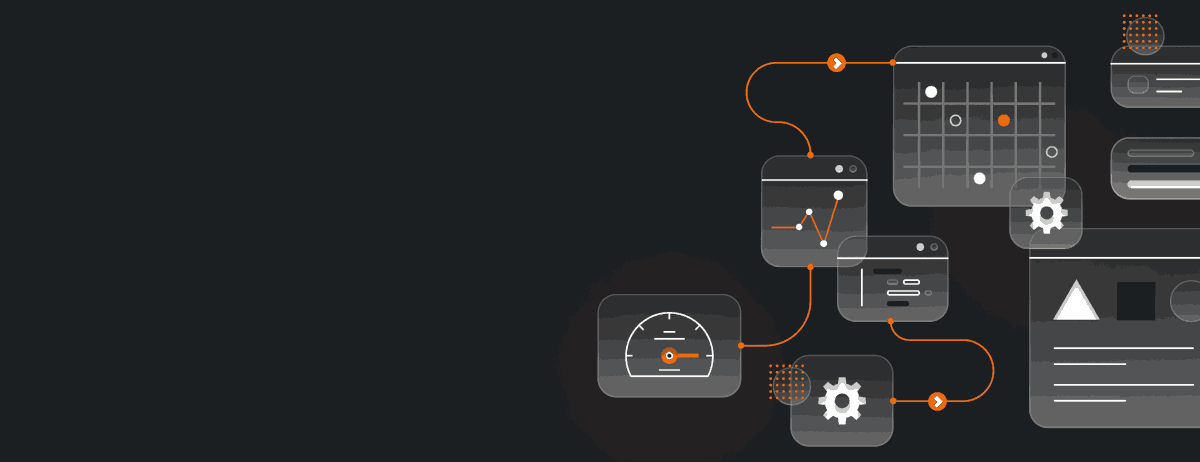
DevOps Site Reliability Engineering (SRE) is a software development approach that combines the principles and practices of DevOps with the reliability-focused approach of SRE. DevOps focuses on collaboration and automation to streamline software development and operations, while SRE aims to ensure the reliability and resilience of systems.
The fusion of DevOps and SRE leads to improved efficiency and unprecedented levels of reliability. It enhances software development processes by ensuring reliability, scalability, and faster time-to-market. It improves system stability, reduces downtime, and promotes proactive problem-solving.
Key Takeaways
- DevOps Site Reliability Engineering combines the principles and practices of DevOps with the reliability-focused approach of SRE.
- This fusion leads to improved efficiency and unprecedented levels of reliability.
- DevOps SRE enhances software development processes by ensuring reliability, scalability, and faster time-to-market.

Understanding DevOps and SRE
DevOps is an approach to software development that emphasizes collaboration and communication between development, operations, and quality assurance teams. Its primary goal is to achieve faster and more frequent delivery of high-quality software. DevOps achieves this by breaking down silos and using automation to streamline the development and deployment processes.
Site Reliability Engineering (SRE) is an engineering approach to managing large-scale systems. Its primary focus is on ensuring the reliability and resilience of these systems. SRE achieves this by bridging the gap between development and operations teams, creating a culture of shared responsibility for system reliability, and using automation to manage complex systems.
While DevOps and SRE have distinct goals and approaches, they share many principles and practices. Both prioritize collaboration, automation, and continuous improvement.
In recent years, organizations have recognized the potential benefits of combining DevOps and SRE to achieve unprecedented levels of reliability and efficiency.
DevOps
DevOps is based on a set of principles that emphasize communication, automation, and shared responsibility:
- Collaboration: DevOps promotes collaboration between development, operations, and quality assurance teams to ensure faster delivery and higher quality software.
- Automation: Automation is key to achieving faster, more reliable software delivery and deployment.
- Continuous improvement: DevOps encourages a culture of continuous improvement, with regular feedback loops and continuous integration and delivery.
DevOps is commonly associated with Agile software development, although it is not limited to this methodology. Organizations that have successfully implemented DevOps principles have reported significant improvements in time-to-market, software quality, and team morale.
Key Concepts in DevOps SRE
DevOps Site Reliability Engineering (SRE) combines the principles of DevOps with the reliability-focused approach of SRE. Here are some key concepts in DevOps SRE:
Error Budgets
An error budget represents the amount of downtime or errors a service can experience within a specific period before violating its Service Level Objectives (SLOs). It enables teams to prioritize their efforts and investments by aligning on what level of reliability they aim to provide.
Here’s a practical code sample for tracking and enforcing error budgets using Prometheus, a popular open-source monitoring system that supports defining SLOs and error budgets.
Code Sample: Tracking Error Budgets with Prometheus
The following example demonstrates how you might define SLOs and error budgets in Prometheus for a web service. This setup involves tracking the percentage of successful requests over a rolling window and comparing it to the SLO. If the error rate exceeds the budget, alerts can be triggered.
Prometheus Configuration to Track SLOs and Error Budgets:
groups:
- name: error-budget
rules:
# Define SLO: 99.9% availability over a 30-day rolling window
- record: job:request_success_ratio
expr: |
sum(rate(http_requests_total{job="my-web-service",status=~"2.."}[30d]))
/
sum(rate(http_requests_total{job="my-web-service"}[30d]))
# Calculate remaining error budget as a percentage
- record: job:error_budget_remaining
expr: |
(0.999 - job:request_success_ratio) * 100
# Alert if the error budget is below a certain threshold (e.g., 10% remaining)
- alert: ErrorBudgetBurnRateTooHigh
expr: job:error_budget_remaining < 10
for: 1h
labels:
severity: critical
annotations:
summary: "High error budget burn rate detected for my-web-service"
description: "The error budget for my-web-service is below 10%, indicating a higher than acceptable error rate."Explanation:
- The first rule calculates the success ratio of requests for
my-web-serviceover the past 30 days. It divides the number of successful requests (status code 200-299) by the total number of requests. - The second rule calculates the remaining error budget as a percentage. It subtracts the success ratio from the SLO target (99.9% availability) and multiplies by 100 to get a percentage.
- The third rule defines an alert condition that fires if the remaining error budget drops below 10%, indicating that the service is burning through its error budget too quickly. This condition must persist for at least 1 hour before the alert triggers, helping to avoid noise from short-term spikes in errors.
This example illustrates how Prometheus can be used to implement and enforce error budgets, providing a mechanism for teams to monitor and respond to reliability issues proactively. Integrating such a system into your SRE practices enables more data-driven decision-making regarding feature development, system improvements, and risk management.
Incident Management
Incident management is the process of detecting, responding to, and resolving incidents to restore normal service operation. When an incident occurs, it is critical to have a predefined process in place to investigate and remediate the issue as quickly and efficiently as possible.
Blameless Postmortems
A postmortem is a retrospective analysis of an incident aimed at identifying its root causes and preventing similar incidents from reoccurring. Blameless postmortems seek to create a culture of openness and learning, where teams focus on fixing systems, not blaming individuals.
To enable reliable and efficient software development, DevOps SRE emphasizes the importance of automation and monitoring. By automating repetitive tasks, teams can focus on higher-value work, and by monitoring systems, they can detect issues early and respond proactively.
The Benefits of Combining DevOps and SRE

Combining DevOps with Site Reliability Engineering (SRE) practices offers many benefits for organizations and their software development processes.
One of the primary advantages of this fusion is improved efficiency, which stems from the integration of fast feedback loops, automation, and continuous delivery. By automating repetitive and manual tasks, teams can focus on higher-value work and deliver new features and functionality faster and more reliably.
Another key benefit of DevOps SRE is unprecedented levels of reliability. By building reliability into the development process from the outset, teams can ensure that systems are resilient and can recover quickly from any issues or failures. This approach promotes proactive problem-solving by identifying potential issues before they occur and allowing for quick remediation.
Furthermore, DevOps SRE practices promote system stability and reduce downtime, which can lead to better customer satisfaction and retention. By automating the deployment and monitoring of applications, teams can quickly detect and respond to issues, minimizing the impact on customers and business operations.
Several companies have successfully integrated DevOps SRE practices, including Google, Netflix, and Amazon. These companies have achieved notable benefits such as reduced time-to-market, improved system reliability, and increased customer satisfaction.
Implementing DevOps SRE Practices
Adopting DevOps SRE practices requires a comprehensive change in the organization’s culture, processes, and technology. Here are some practical tips to help you get started:
Cross-Functional Collaboration
DevOps SRE involves seamless collaboration between development, operations, and other stakeholders from the beginning of the software development lifecycle. This ensures that all parties are aligned on the project’s goals and can deliver a high-performing, reliable product. To foster this collaboration, consider:
- Creating cross-functional teams with members from both development and operations departments.
- Implementing collaboration tools that enable real-time communication and feedback.
- Scheduling regular meetings to discuss progress, challenges, and feedback from end-users.
Continuous Integration and Delivery
Continuous integration and delivery are central to DevOps SRE, as they enable teams to deliver software quickly and reliably. To achieve this, consider:
- Automating the build, test, and deployment pipeline.
- Creating a continuous integration and delivery environment.
- Using containerization technologies such as Docker to enable portability and consistency across environments.
Infrastructure as Code
DevOps SRE also involves managing infrastructure as code, which means using code to define, provision, and manage IT infrastructure instead of manual processes. This approach enables teams to rapidly provision and scale infrastructure, ensuring consistency and reliability. To implement infrastructure as code, consider:
- Using tools such as Terraform or CloudFormation to define infrastructure in code.
- Automating the provisioning of infrastructure to ensure consistency.
- Integrating infrastructure as code with your continuous delivery pipeline.
Code sample that illustrates how these concepts can be implemented together, focusing on the automation of infrastructure provisioning and application deployment using Terraform and Jenkins.
pipeline {
agent any
stages {
stage('Checkout Code') {
steps {
// Check out the source code from a version control system
checkout scm
}
}
stage('Unit Tests') {
steps {
// Run unit tests (assuming a Java project)
sh 'mvn test'
}
}
stage('Build Docker Image') {
steps {
// Build a Docker image from the Dockerfile in the source code
sh 'docker build -t my-application:${BUILD_NUMBER} .'
}
}
stage('Push Docker Image') {
steps {
// Push the built image to a Docker registry
sh 'docker push my-application:${BUILD_NUMBER}'
}
}
stage('Deploy Infrastructure with Terraform') {
steps {
script {
// Initialize Terraform
sh 'terraform init infrastructure/'
// Apply Terraform configuration
sh 'terraform apply -auto-approve infrastructure/'
}
}
}
stage('Deploy Application') {
steps {
// Deployment could involve a script that uses Terraform output
// to update the application's infrastructure, such as ECS service or Kubernetes deployment
sh './deploy-application.sh'
}
}
}
post {
always {
// Clean up, send notifications, etc.
echo 'Pipeline execution completed.'
}
}
}Terraform Configuration (infrastructure/main.tf):
provider "aws" {
region = "us-east-1"
}
resource "aws_ecs_cluster" "my_cluster" {
name = "my-application-cluster"
}
resource "aws_ecs_service" "my_service" {
name = "my-application-service"
cluster = aws_ecs_cluster.my_cluster.id
task_definition = "my-application-task:1"
desired_count = 2
load_balancer {
target_group_arn = "arn:aws:elasticloadbalancing:region:account-id:targetgroup/my-targets/1234567890123456"
container_name = "my-application"
container_port = 80
}
}
# Additional resources like task definitions, load balancers, etc.Deploy Application Script (deploy-application.sh):
#!/bin/bash
# Script to update the ECS service with the new Docker image
ecs-cli service update --cluster my-application-cluster --service my-application-service --force-new-deploymentThis setup illustrates the DevOps SRE practices by using Jenkins for CI/CD to automate the testing, building, and deployment of an application, alongside Terraform for provisioning and managing infrastructure as code. This ensures that both application deployment and infrastructure management are automated, consistent, and repeatable, embodying the principles of DevOps SRE.
Overcoming Challenges in DevOps SRE

While the fusion of DevOps and Site Reliability Engineering (SRE) offers immense benefits, it also poses certain challenges that must be overcome to achieve success. Organizations may encounter obstacles related to cultural shifts, tooling complexities, and resistance to change.
To overcome these challenges, it is important to establish a clear vision of the end-goal and communicate it effectively to all stakeholders. Cross-functional collaboration and communication are critical components of the DevOps SRE approach, and it is crucial to encourage and empower teams to work together effectively.
One common challenge is the need for cultural shifts to embrace a blameless postmortem approach. This requires a change in mindset and organizational culture, with a focus on learning from mistakes and improving processes instead of finding and fixing blame.
An additional challenge is overcoming tooling complexities. Implementing automated testing and deployment pipelines, infrastructure as code, and monitoring frameworks can be complex and require careful planning and buy-in from all stakeholders.
Organizational resistance to change is often encountered when attempting to combine DevOps and SRE practices. This can be addressed by building a strong business case for the benefits of the approach and demonstrating its value through pilot projects and successful implementations.
Ultimately, it is important to approach DevOps SRE as a journey rather than a destination. Organizations should regularly evaluate their practices and processes and continuously improve, embracing a culture of experimentation and innovation. By doing so, they can successfully overcome challenges and reap the benefits of the DevOps SRE approach.
Industry Examples of DevOps SRE Success
Several industry players have adopted DevOps SRE successfully and achieved remarkable results. Here are some examples:
| Company | Benefits |
|---|---|
| Netflix | Improved reliability with 99.99% uptime, reduced downtime, and faster incident resolution through improved collaboration and automation. |
| Reduced emergency response time by 90%, faster software delivery, and better customer experience by integrating SRE with DevOps practices. | |
| Capital One | Increased uptime to 99.99%, faster time-to-market, and reduced failure rates by combining SRE with DevOps and Agile methodologies. |
These examples demonstrate the effectiveness of DevOps SRE in ensuring reliable and efficient software delivery. By combining DevOps and SRE practices, organizations can achieve unprecedented levels of reliability and efficiency, leading to better customer experiences and higher overall business success.
Conclusion
The fusion of DevOps and Site Reliability Engineering (SRE) provides a reliable and efficient approach to software development and operations. This article has highlighted how DevOps and SRE individually focus on collaboration, automation, and reliability to ensure the efficient and reliable functioning of systems.
By combining these two approaches, organizations can enjoy unprecedented levels of efficiency and reliability in their systems and operations. This article has discussed the benefits of this fusion, such as faster time-to-market, stable systems, and proactive problem-solving.
External Resources
FAQ

1. How can I integrate monitoring into my CI/CD pipeline for better reliability?
FAQ: Effective monitoring within CI/CD pipelines helps detect issues early, ensuring that only stable builds are deployed to production.
Code Sample (Integrating Prometheus Metrics in Jenkins Pipeline):
pipeline {
agent any
stages {
stage('Build') {
steps {
// Build steps here
echo 'Building...'
}
}
stage('Test') {
steps {
// Test steps here
echo 'Testing...'
}
}
stage('Deploy') {
steps {
// Deploy steps here
echo 'Deploying...'
}
post {
success {
script {
// Assume metrics_push_gateway is accessible
def metricsPushGateway = 'http://metrics_push_gateway:9091/'
def jobName = 'my_project_build'
sh "echo 'deployment_success{job=\"${jobName}\"} 1' | curl --data-binary @- ${metricsPushGateway}/metrics/job/${jobName}"
}
}
failure {
script {
def metricsPushGateway = 'http://metrics_push_gateway:9091/'
def jobName = 'my_project_build'
sh "echo 'deployment_failure{job=\"${jobName}\"} 1' | curl --data-binary @- ${metricsPushGateway}/metrics/job/${jobName}"
}
}
}
}
}
}2. How do I automate the scaling of my application based on traffic?
FAQ: Dynamically scaling applications in response to traffic patterns can significantly enhance performance and reliability.
Code Sample (Kubernetes HPA for Auto-scaling):
apiVersion: autoscaling/v1
kind: HorizontalPodAutoscaler
metadata:
name: my-application-hpa
namespace: default
spec:
scaleTargetRef:
apiVersion: apps/v1
kind: Deployment
name: my-application
minReplicas: 2
maxReplicas: 10
targetCPUUtilizationPercentage: 80This Kubernetes Horizontal Pod Autoscaler (HPA) automatically adjusts the number of pods in a deployment based on the CPU utilization, ensuring the application scales based on demand.
3. How do I ensure zero-downtime deployments in my DevOps pipeline?
FAQ: Zero-downtime deployments are crucial for maintaining service availability during updates.
Code Sample (Using Kubernetes Rolling Updates):
apiVersion: apps/v1
kind: Deployment
metadata:
name: my-application
spec:
strategy:
type: RollingUpdate
rollingUpdate:
maxUnavailable: 0
maxSurge: 1
selector:
matchLabels:
app: my-application
template:
metadata:
labels:
app: my-application
spec:
containers:
- name: my-application
image: my-application:latest
ports:
- containerPort: 8080
This Kubernetes deployment configuration ensures that new versions of your application are rolled out gradually, replacing the old pods with new ones without downtime.
These examples demonstrate how DevOps and SRE principles can be applied to enhance monitoring, scalability, and deployment strategies, ensuring that applications are reliable, scalable, and continuously delivered with minimal disruption.

James is an esteemed technical author specializing in Operations, DevOps, and computer security. With a master’s degree in Computer Science from CalTech, he possesses a solid educational foundation that fuels his extensive knowledge and expertise. Residing in Austin, Texas, James thrives in the vibrant tech community, utilizing his cozy home office to craft informative and insightful content. His passion for travel takes him to Mexico, a favorite destination where he finds inspiration amidst captivating beauty and rich culture. Accompanying James on his adventures is his faithful companion, Guber, who brings joy and a welcome break from the writing process on long walks.
With a keen eye for detail and a commitment to staying at the forefront of industry trends, James continually expands his knowledge in Operations, DevOps, and security. Through his comprehensive technical publications, he empowers professionals with practical guidance and strategies, equipping them to navigate the complex world of software development and security. James’s academic background, passion for travel, and loyal companionship make him a trusted authority, inspiring confidence in the ever-evolving realm of technology.






